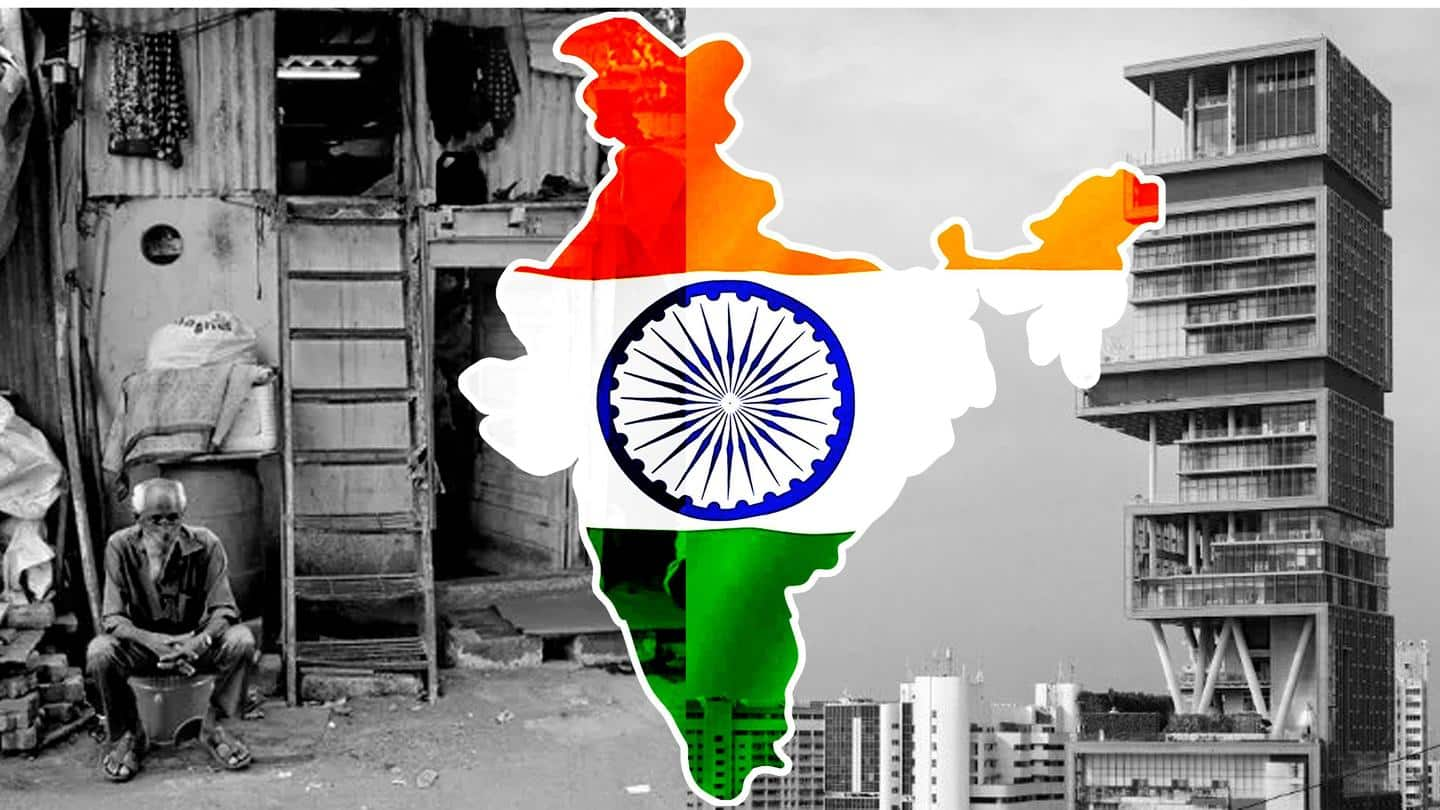
Number of billionaires increased in India, household income declined: Oxfam
What's the story
In 2021, the income of 84% of Indian households fell, however, the number of billionaires in the country increased from 102 to 142, states a report by Oxfam. The "Inequality Kills" report states that India's 10 wealthiest people can support schooling and higher education for the country's children for the next 25 years. This underlines a widening economic gap aggravated by the COVID-19 pandemic.
Context
Why does this story matter?
During the pandemic, the billionaires increased their wealth, however, the poor continued to suffer. Even as India has the world's third-largest number of billionaires after the United States and China, its unemployment rate was as high as 15% in urban areas in 2021, the report stated. Meanwhile, the Adanis were responsible for one-fifth of the growth in wealth among 100 richest families, it added.
Quote
Adani's net worth multiplied 8X: Report
"Gautam Adani witnessed his net worth multiply by eight times in one year; from $8.9 billion in 2020 to $50.5 billion in 2021," the report stated. Returns from the Carmichael mines in Australia, and shares in the Mumbai airport have contributed to Adani's expansion, it said. "Mukesh Ambani's net worth doubled in 2021 to $85.5 billion from $36.8 billion in 2020,'' it added.
Inequality
Wealth of Indian billionaires reached new heights
According to the report, the wealth of Indian billionaires climbed from Rs. 23.14 lakh crore to Rs. 53.16 lakh crore. An additional 1% tax on the wealthiest 98 billionaire families would fund Ayushman Bharat—the world's largest health insurance scheme—for almost seven years. It would take 84 years for the ten wealthiest Indian billionaires to deplete their existing fortunes, if they spend $1 million daily.
Do you know?
Extreme poverty in India
According to the United Nations, more than 4.6 crore Indians fell into extreme poverty in 2020. They accounted for roughly half of the world's "new poor." In 2021, the bottom 50% of the population owned only 6% of the country's wealth, the Oxfam report said.
Information
Wealth tax could've aided quality of health services: Report
An additional 1% tax on the wealthiest 10% of India's population could have delivered almost 17.7 lakh additional oxygen cylinders, the report said. Notably, India's health infrastructure massively had deteriorated during the second wave of COVID-19 (April-May 2021) as the demand for hospital beds, oxygen, and medicines skyrocketed. However, with an underfunded healthcare system, access to healthcare was dangerously limited.
Estimates
Decline in healthcare and education budget
Even as COVID-19 continued to wreak havoc in India, the country's healthcare budget fell by 10% from revised estimates of 2020-21, the report said. The budgetary allocation for education was slashed by 6%, it added. It further said that the budgetary allotment for social security systems was also reduced from 1.5% to 0.6% of the total Union Budget.
Quote
'COVID-19 set back gender parity by 135 years'
"The pandemic has set gender parity back from 99 years to now 135 years," said Oxfam India CEO Amitabh Behar. He added that in 2020, women lost Rs. 59.11 lakh crore in earnings, with 1.3 crore lesser women working compared to 2019. "It has never been so important to start righting the wrongs of this obscene inequality," said Behar.